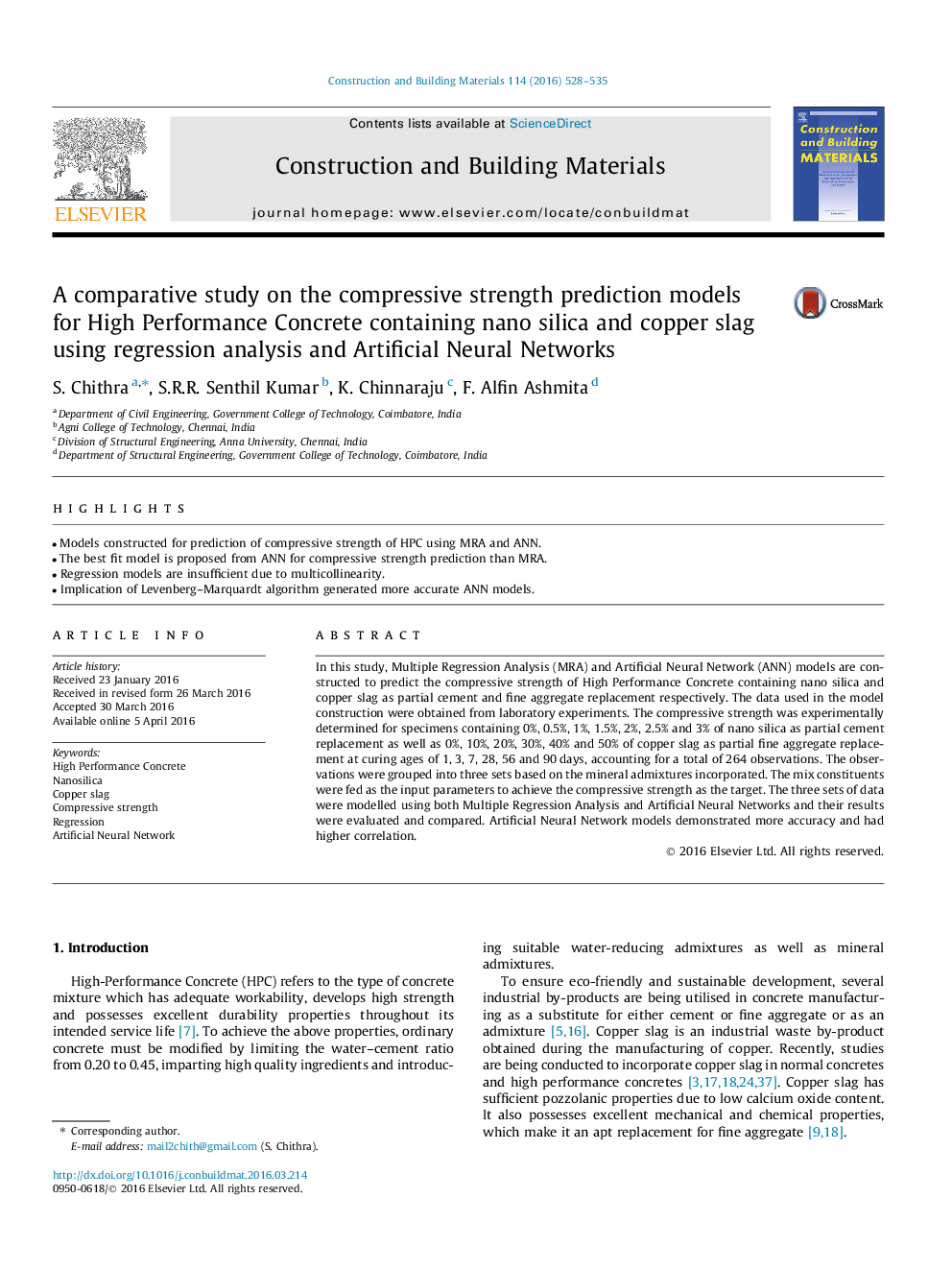| Article ID | Journal | Published Year | Pages | File Type |
|---|---|---|---|---|
| 256009 | Construction and Building Materials | 2016 | 8 Pages |
•Models constructed for prediction of compressive strength of HPC using MRA and ANN.•The best fit model is proposed from ANN for compressive strength prediction than MRA.•Regression models are insufficient due to multicollinearity.•Implication of Levenberg–Marquardt algorithm generated more accurate ANN models.
In this study, Multiple Regression Analysis (MRA) and Artificial Neural Network (ANN) models are constructed to predict the compressive strength of High Performance Concrete containing nano silica and copper slag as partial cement and fine aggregate replacement respectively. The data used in the model construction were obtained from laboratory experiments. The compressive strength was experimentally determined for specimens containing 0%, 0.5%, 1%, 1.5%, 2%, 2.5% and 3% of nano silica as partial cement replacement as well as 0%, 10%, 20%, 30%, 40% and 50% of copper slag as partial fine aggregate replacement at curing ages of 1, 3, 7, 28, 56 and 90 days, accounting for a total of 264 observations. The observations were grouped into three sets based on the mineral admixtures incorporated. The mix constituents were fed as the input parameters to achieve the compressive strength as the target. The three sets of data were modelled using both Multiple Regression Analysis and Artificial Neural Networks and their results were evaluated and compared. Artificial Neural Network models demonstrated more accuracy and had higher correlation.
